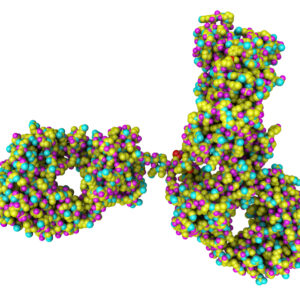MOUSE ANTI CRYPTOSPORIDIUM ANTIBODY (1D10)
Mouse anti Cryptosporidium antibody (1D10) is specific for a carbohydrate on the surface of Cryptosporidium parvum oocysts. It reacts with oocysts from all Cryptosporidium species.
PRODUCT DETAILS – MOUSE ANTI CRYPTOSPORIDIUM ANTIBODY (1D10)
- Mouse anti Cryptosporidium Antibody (1D10).
- Isotype – Mouse IgG1
- Affinity chromatography on protein A.
- Presented in Phosphate Buffered Saline, pH 7.2 with 0.1% Sodium Azide (NaN3).
- Suitable for use in ELISA, IFA, WB.
BACKGROUND
Tyzzer first described Cryptosporidium in 1907, as an apicomplexan parasite identified from the gastric epithelium of laboratory mice, and later named Cryptosporidium muris. Cryptosporidium species from turkeys were first associated with diarrhea and mortality, by Slavin in 1955. The veterinary importance of Cryptosporidium was highlighted in 1970, by the association of Cryptosporidium parvum with bovine diarrhea. The public health importance of Cryptosporidium was realized by the description of severe and life-threatening symptoms in AIDS patients. In a review of worldwide waterborne outbreaks occurring between 2004 and 2010, Baldursson and Karanis found that Cryptosporidium is the most common waterborne parasite, responsible for more than 60% of outbreaks. However, only a few Cryptosporidium spp. infect humans, of which C. parvum and Cryptosporidium hominis are the most prevalent (Bouzid et al., 2013; Bouzid, 2014). Their characteristic resistance is due mainly to their environmentally resistant oocyst surviving most water disinfection procedures; they can survive in aquatic environments for months. The oocysts have a spheroid shape and are 4 to 6 µm in diameter. The structure of the oocyst wall is rich in complex polysaccharides. As few as 30 ingested Cryptosporidium oocysts causes a profuse watery diarrhea and infection in immunocompromised individuals is much more severe.
REFERENCES
- Bouzid M, Hunter PR, Chalmers RM, Tyler KM. Cryptosporidium pathogenicity and virulence. Clin Microbiol Rev. 2013 Jan;26(1):115-34.
- Waterborne Parasites. Detection of Food- and Waterborne Parasites. M. Bouzid, in Encyclopedia of Food Microbiology (Second Edition), 2014.


